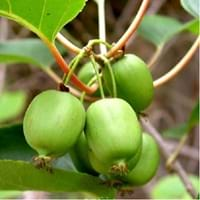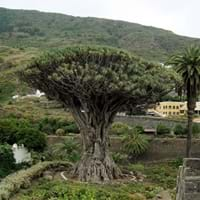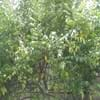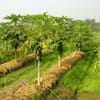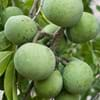Life Span
Perennial
Biennial
Type
Fruit
Tender Perennial
Origin
Eastern Asia
Africa
Types
Actinidia arguta, Actinidia giraldii, Actinidia hypoleuca
Marginata, Fragrans, Draco, Cinnabari
Habitat
Dappled Shade, open Woodlands
Tropical regions, Warmer regions
USDA Hardiness Zone
3-8
10-15
Sunset Zone
1a, 1b, 2a, 2b, 3a, 3b, 4, 5, 6, 7, 8, 9, 14, 15, 16, 17, 18, 19, 20
H2, 21, 23, 24
Habit
Vining/Climbing
Upright/Erect
Flower Color
White, Ivory
White
Flower Color Modifier
Bicolor
Bicolor
Fruit Color
Green, Yellow green
Orange
Leaf Color in Spring
Green, Dark Green
Green
Leaf Color in Summer
Dark Green
Green
Leaf Color in Fall
Dark Green
Green
Leaf Color in Winter
Light Green
Purple, Burgundy, Bronze
Leaf Shape
Oval
Long Elliptic
Plant Season
Spring, Summer, Fall
Spring, Summer, Fall, Winter
Sunlight
Full Sun, Partial Sun
Full Sun, Partial Sun, Partial shade
Type of Soil
Loam
Loam, Sand
The pH of Soil
Neutral
Neutral
Soil Drainage
Well drained
Well drained
Bloom Time
Spring, Late Spring, Early Summer
Late Summer, Early Fall, Fall, Late Fall
Tolerances
Shade areas
Drought, Salt
Where to Plant?
Ground, Pot
Container, Ground, Pot
How to Plant?
Grafting, Stem Cutting
Seedlings, Stem Planting
Plant Maintenance
Low
Medium
Watering Requirements
Average Water Needs, Requires regular watering
Needs watering once a week, Water once every two or three weeks
In Summer
Regular watering required
Lots of watering
In Spring
Moderate
Moderate
In Winter
Average Water
Average Water
Soil Type
Loam
Loam, Sand
Soil Drainage Capacity
Well drained
Well drained
Sun Exposure
Full Sun, Partial Sun
Full Sun, Partial Sun, Partial shade
Pruning
Remove damaged leaves, Remove dead branches, Remove dead leaves
Remove damaged leaves, Remove dead branches, Remove dead leaves
Fertilizers
Apply 10-10-10 amount, fertilize twice a year
fertilize in spring, fertilize in summer, Water soluble fertilizers
Pests and Diseases
Botrytis head rot, Japanese Beetles, Leaf Rollers, Nematodes, Phytophthora, Root rot, Sclerotinia blight, Spider mites, Thripes
Red blotch
Plant Tolerance
Shade areas
Drought
Flowers
Showy
Insignificant
Flower Petal Number
Single
Single
Foliage Texture
Medium
Coarse
Foliage Sheen
Glossy
Glossy
Attracts
Cats
Insects, Spider Mites
Allergy
Not Available
no allergic reactions
Aesthetic Uses
Cottage Garden
Beautification, Landscape Designing, Showy Purposes
Beauty Benefits
Not Available
Not Available
Environmental Uses
Shadow Tree
Air purification, Food for insects, Prevent Soil Erosion
Medicinal Uses
Antioxidants, Fiber, Folate, Rich in Potassium, Vitamin C
No Medicinal Use
Part of Plant Used
Fruits
Stem
Other Uses
Grown for shade
Decoration Purposes, Showy Purposes, Used as Ornamental plant
Used As Indoor Plant
No
Yes
Used As Outdoor Plant
Yes
Yes
Garden Design
Edible, Feature Plant, Vine
Container, Feature Plant, Foundation, Houseplant, Mixed Border, Tropical
Botanical Name
ACTINIDIA arguta
DRACAENA fragrans
Common Name
Hardy Kiwi
Corn Plant, Dracaena
In Hindi
हार्डी कीवी
Dracaena
In German
Hardy Kiwi
Dracaena
In Spanish
kiwi hardy
Árbol de serpiente
In Greek
σκληραγωγημένα ακτινίδια
Δράκαινα
In Portuguese
kiwi Hardy
Dracaena
In Polish
hardy kiwi
Dracena
In Latin
Hardy kiwi
Dracaena
Phylum
Magnoliophyta
Magnoliophyta
Class
Magnoliopsida
Liliopsida
Family
Actinidiaceae
Agavaceae
Clade
Angiosperms, Asterids, Eudicots
Angiosperms, Monocots
Tribe
Not Available
Not Available
Subfamily
Actinidiaceae
Nolinoideae
Number of Species
Not Available
Season and Care of Hardy Kiwi and Dracaena
Season and care of Hardy Kiwi and Dracaena is important to know. While considering everything about Hardy Kiwi and Dracaena Care, growing season is an essential factor. Hardy Kiwi season is Spring, Summer and Fall and Dracaena season is Spring, Summer and Fall. The type of soil for Hardy Kiwi is Loam and for Dracaena is Loam, Sand while the PH of soil for Hardy Kiwi is Neutral and for Dracaena is Neutral.
Hardy Kiwi and Dracaena Physical Information
Hardy Kiwi and Dracaena physical information is very important for comparison. Hardy Kiwi height is 550.00 cm and width 90.00 cm whereas Dracaena height is 120.00 cm and width 90.00 cm. The color specification of Hardy Kiwi and Dracaena are as follows:
Hardy Kiwi flower color: White and Ivory
Hardy Kiwi leaf color: Green and Dark Green
Dracaena flower color: White
- Dracaena leaf color: Green
Care of Hardy Kiwi and Dracaena
Care of Hardy Kiwi and Dracaena include pruning, fertilizers, watering etc. Hardy Kiwi pruning is done Remove damaged leaves, Remove dead branches and Remove dead leaves and Dracaena pruning is done Remove damaged leaves, Remove dead branches and Remove dead leaves. In summer Hardy Kiwi needs Regular watering required and in winter, it needs Average Water. Whereas, in summer Dracaena needs Lots of watering and in winter, it needs Average Water.
